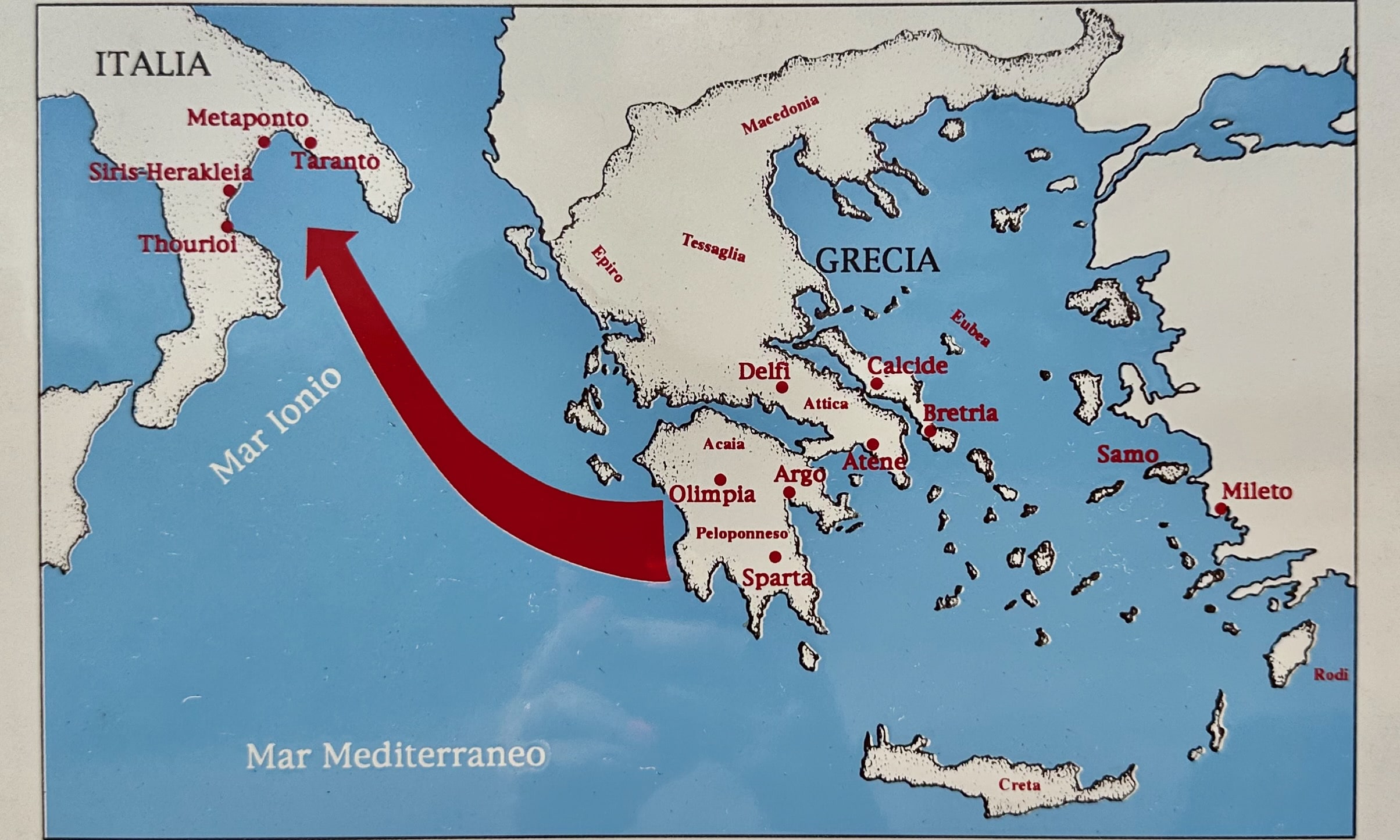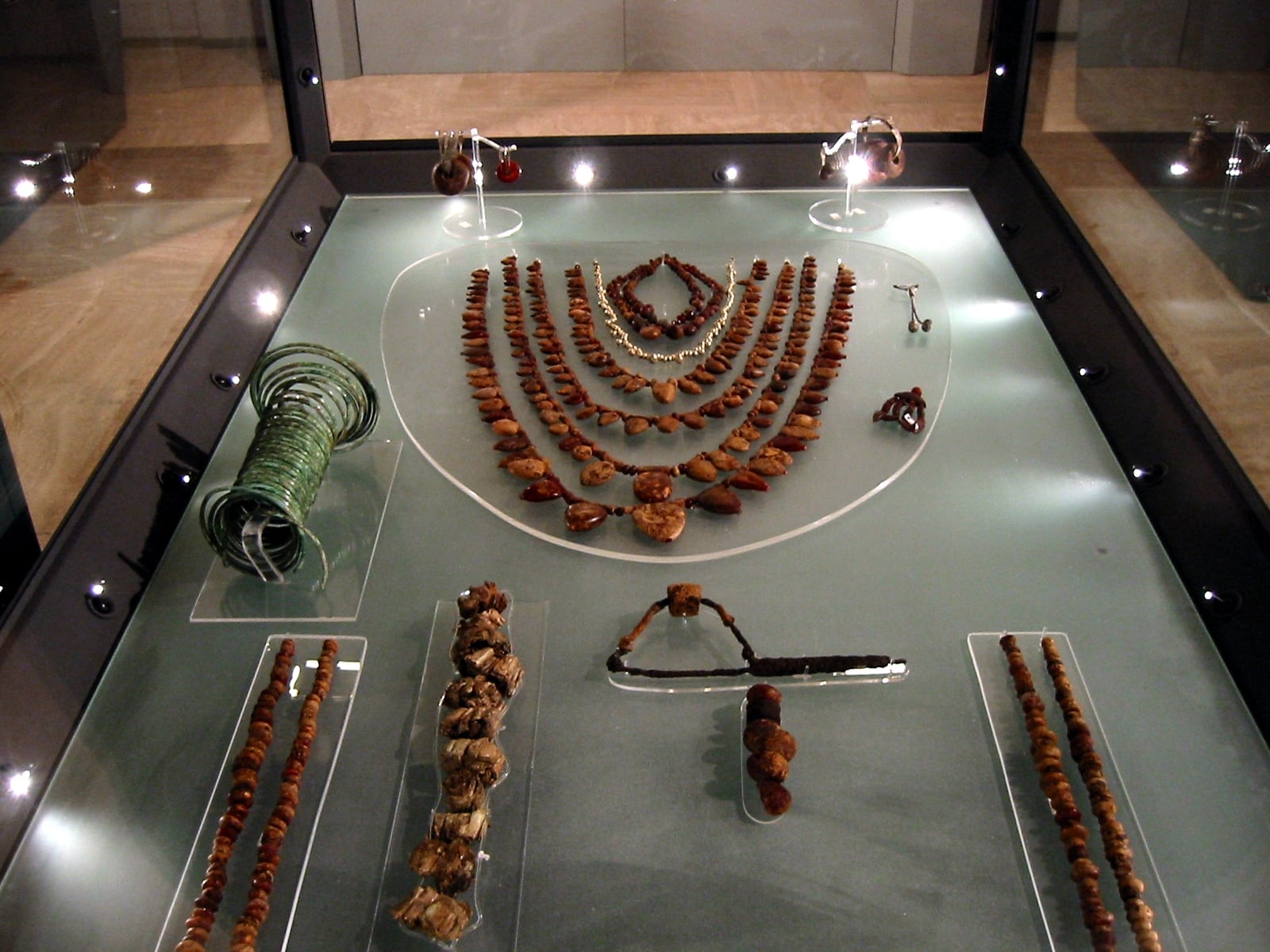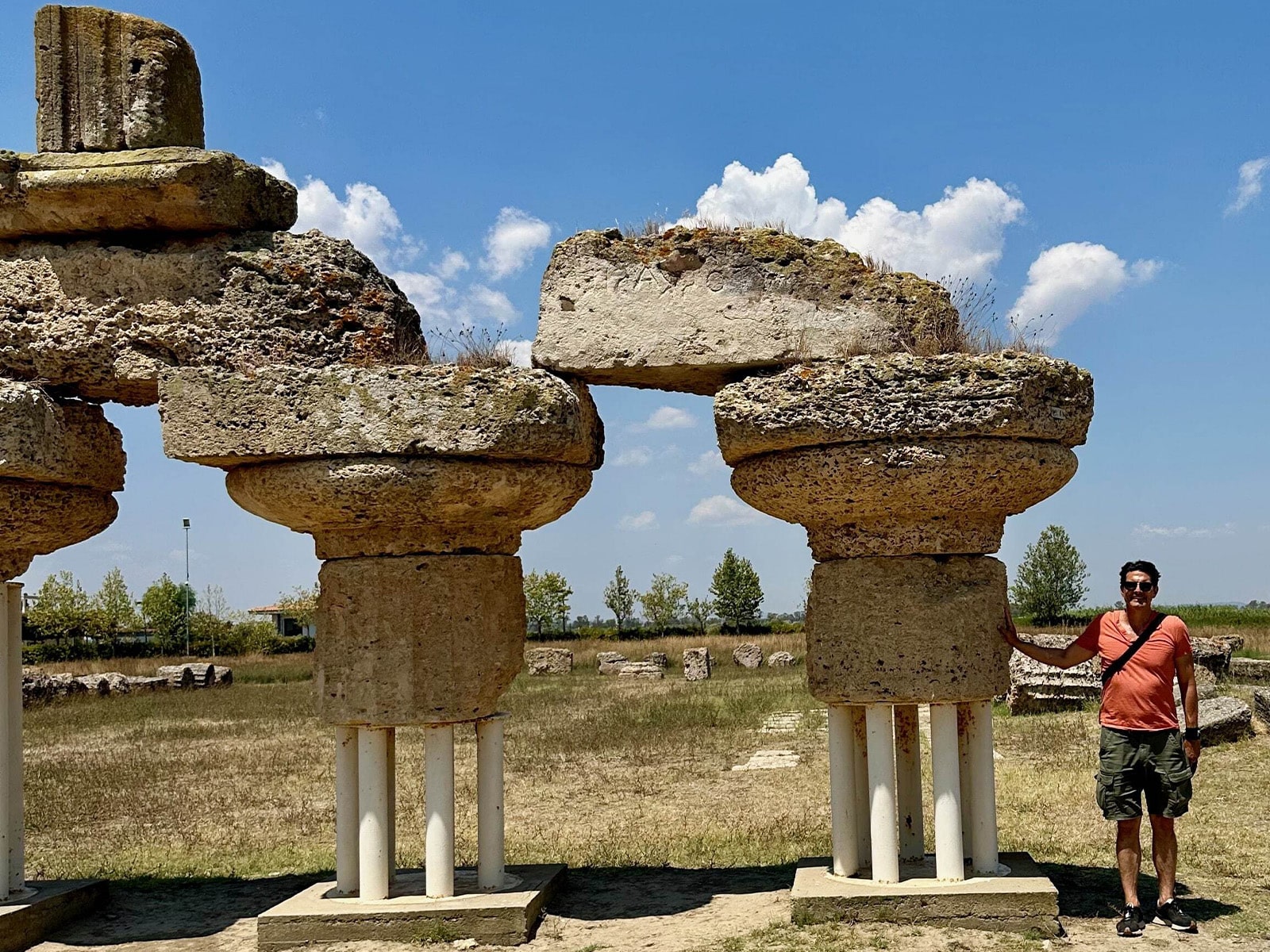Ave from Basilicata, the arch of Italy’s boot!
Picture this: it’s around 8th century BCE, and Greek settlers from Sparta and Achaea sail across the Ionian Sea, drawn by the fertile lands and strategic location. They establish thriving colonies such as Metapontum, Heraclea, and Siris. These aren’t just settlements; they’re bustling hubs of culture, trade, and innovation.
Southern Italy wasn’t all bread and honey. Local inhabitants fought with the Greek colonizers, but eventually adopted many aspects of Hellenistic culture, including language, art, and religious practices, integrating the Greek settlers with the indigenous population.

Magna Graecia Migration

Column detail from Metaponto
Is it all Greek to me? Almost! A visit to Basilicata is an opportunity to explore the region’s rich Hellenistic heritage. The region is one of Italy’s less visted regions, which makes the experience almost these like stepping back in time. For the most part, the sites are unkempt and untrodden, surrounded by fruit farms and olive groves.
We spent a morning at Temple of Hera at Tavole Palatine and the city of Metapontum, a 370-acre archaeological park with temples, sancturay, agora, ceramics production area and castrum. Philosopher Pythagoras spent the last years of his life in here and Hannibal is believed to have used Metapontum as winter quarters for his troops. Next we explored Siris and Heraclea, and its Museo Archaeologico, an incredible collection of pieces that chronicle the Greek colony. More to come are Tursi, Grumentum and Nova Siri.
Exploring Basilicata is also chance to learn about Lucania, the ancient historical region in southern Italy, which largely corresponds to the modern-day region of Basilicata and parts of Calabria. Before Greek colonization, the region was inhabited by indigenous Italic tribes, such as the Oenotrians and the Lucanians, from whom the region derives its name.
Unfortunately, there is not as much remaining though the National Archaeological Museum of Siritide has an excellent exhibition on Lucania and its culture.
All of these sites are facscinating glimpses into the daily lives, religious practices, and innovations of the Ancient Greeks and a better understanding of Hellenization in Southern Italy. Since the land is primarily agricultural, the landscape we were taking in was practically the same that the Ancient Greeks would have seen more than 2800 years ago.

Greek vase from the fourth century B.C. in the Siritide museum

Lucania jewelry in the Siritde museum

Athena temple, Metaponto
This content is brought to you by The American Institute for Roman Culture, a 501(C)3 US Non-Profit Organization.
Please support our mission to aid learning and understanding of ancient Rome through free-to-access content by donating today.
Cite This Page
Cite this page as: Darius Arya, The American Institute for Roman Culture, “Ancient Greece in Basilicata” Ancient Rome Live. Last modified 11/05/2024. https://ancientromelive.org/ancient-greece-in-basilicata/
License
Created by The American Institute of Roman Culture, published on 11/05/2024 under the following license: Creative Commons: Attribution-NonCommercial-ShareAlike. This license lets others remix, tweak, and build upon this content non-commercially, as long as they credit the author and license their new creations under the identical terms. Please note that content linked from this page may have different licensing terms.

